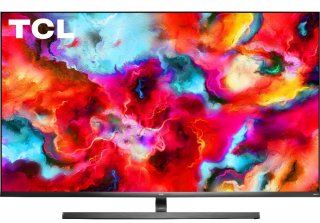OLED vs. QLED: What to Choose in a Bright Room?
What HDTV panel has the advantage in what is surely a very common viewing situation.
Just like today’s HDTVs, not all rooms are created the same.
If your HDTV happens to be in a room that is naturally bright for daytime movies, your overall viewing experience could take a big hit. The quick solution would be to get your room completely pitch-black dark, but unfortunately, that isn’t possible for every situation.
These days, the consumer basically has two options for high-end HDTVs—QLEDs and OLEDs. Sure, we’ve all heard about the never-ending rave reviews regarding OLED panels’ unrivaled picture quality and perfect black levels, but if your TV-watching space has a lot of ambient lighting, perhaps these sets shouldn’t be your first choice.
QLEDs, on the other hand, can really jack up their brightness levels, giving them a noticeable advantage in brighter rooms over their OLED counterparts. Much of that reason is due to the next-generation technology utilized in QLED panels.
These sets, made popular by the Korean tech giant Samsung, are basically LCD TVs with quantum dots—microscopic particles that when hit by light, emit a certain different colored light. The source of this light is the LED backlight, and that light must pass through more layers, such as the LCD layer, to produce the images on the screen.
In improving QLED TVs, Samsung has created a new refined aluminum compound that can make the quantum dots more efficient, and the natural ability to produce more accurate colors. This technology replaces the red, green, and blue color filters that many of the older TVs used.
Because of their powerful backlighting, QLED panels are exceptional in generating incredibly bright light that can really help mitigate those annoying glares and reflections. Most of Samsung’s QLED TVs can produce anywhere between 1,000 and 2,000 nits of brightness. For comparison, you need at least 600 to 700 nits to produce HDR images.
Despite all of their picture-related goodness, OLED panels just can’t match up with that level of brightness because they tap into millions of self-emissive pixels, which have no use for backlighting. When electricity passes through these pixels, they light up in different brilliant colors. The one most sought-after advantage is that OLED pixels can remain completely dark to produce deeper true blacks.
OLED TVs also use additional white light to manufacture even more varied colors, which make for images that are more diverse, richer, and more accurate. Moreover, keep in mind that OLED sets can be designed slimmer and are more environmentally friendly because they use less energy than the competition that depends on backlighting.
The takeaway is that despite the unquestionable advantages in overall picture quality and wide-angle viewing, OLED panels just don’t look as sharp as QLEDs in brighter rooms.
Ethen Kim Lieser is a Minneapolis-based Science and Tech Editor who has held posts at Google, The Korea Herald, Lincoln Journal Star, AsianWeek and Arirang TV. Follow or contact him on LinkedIn.
Image: TCL.

